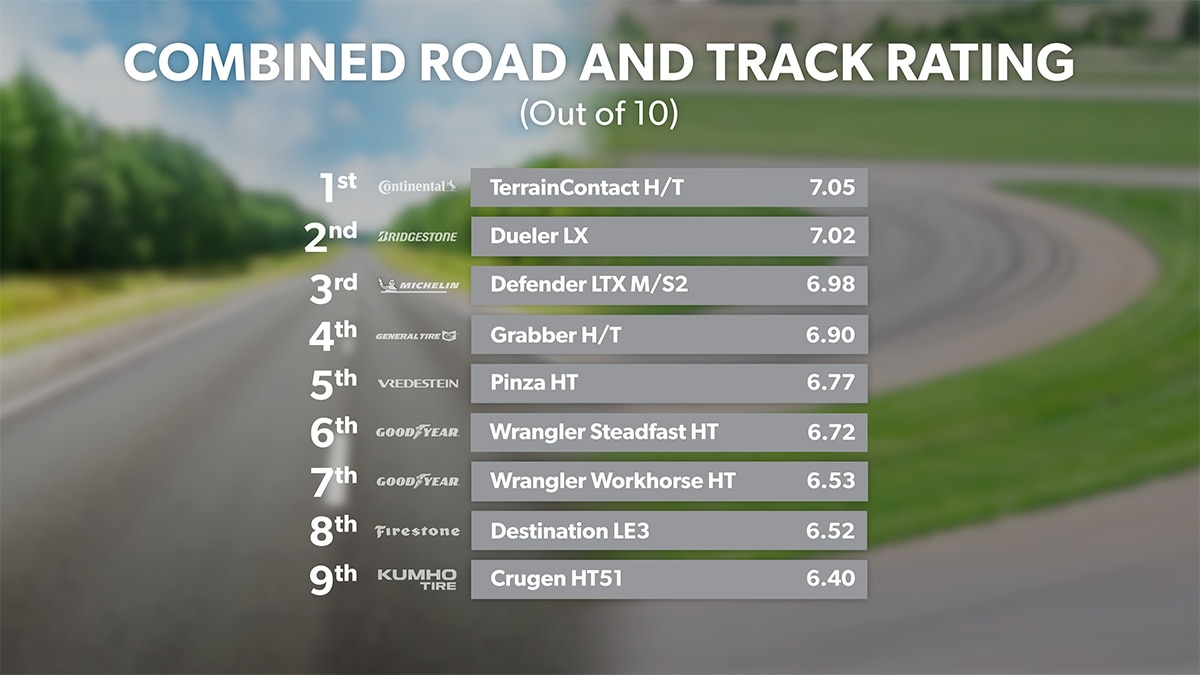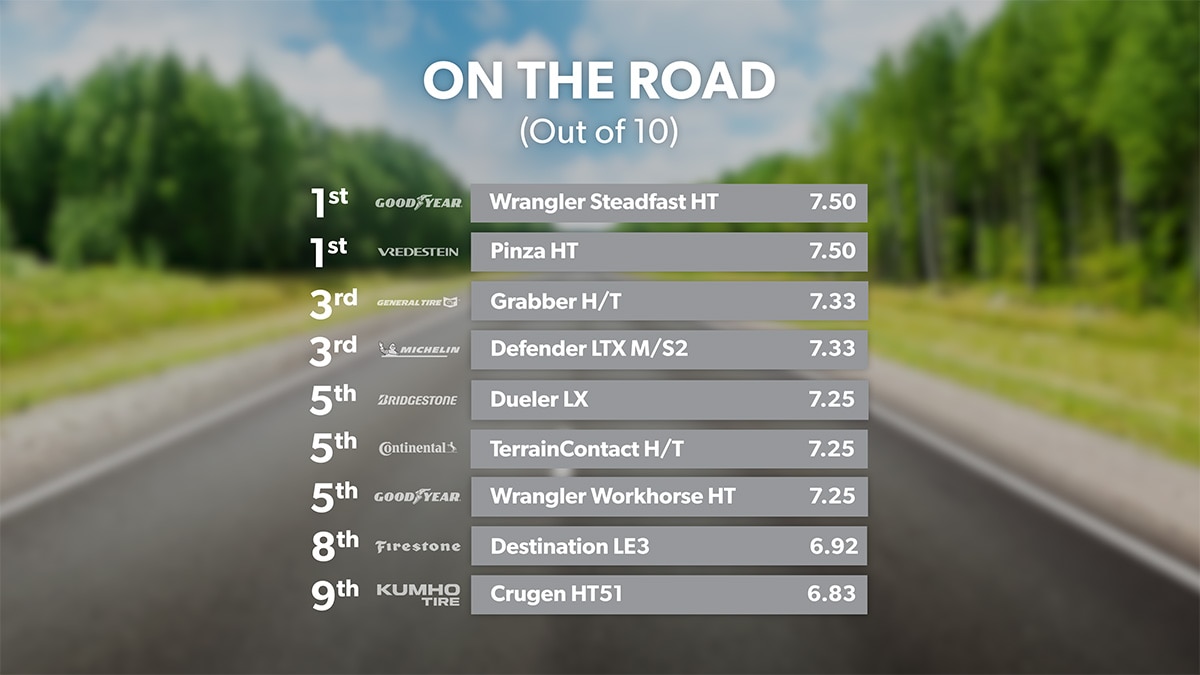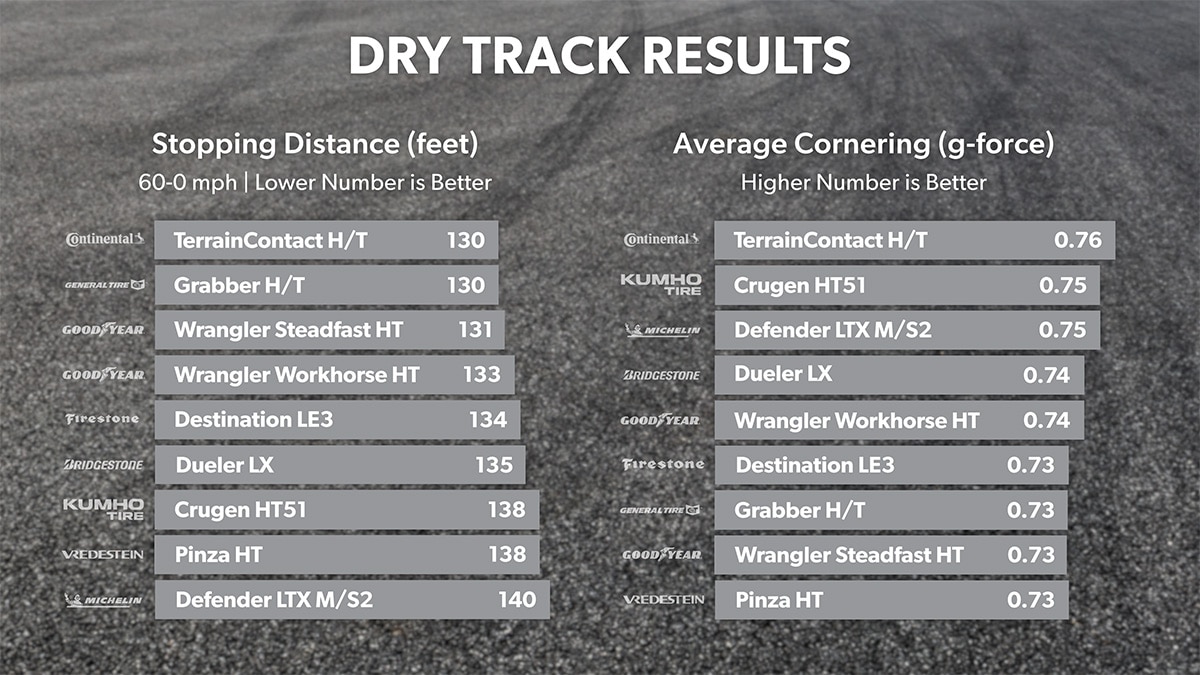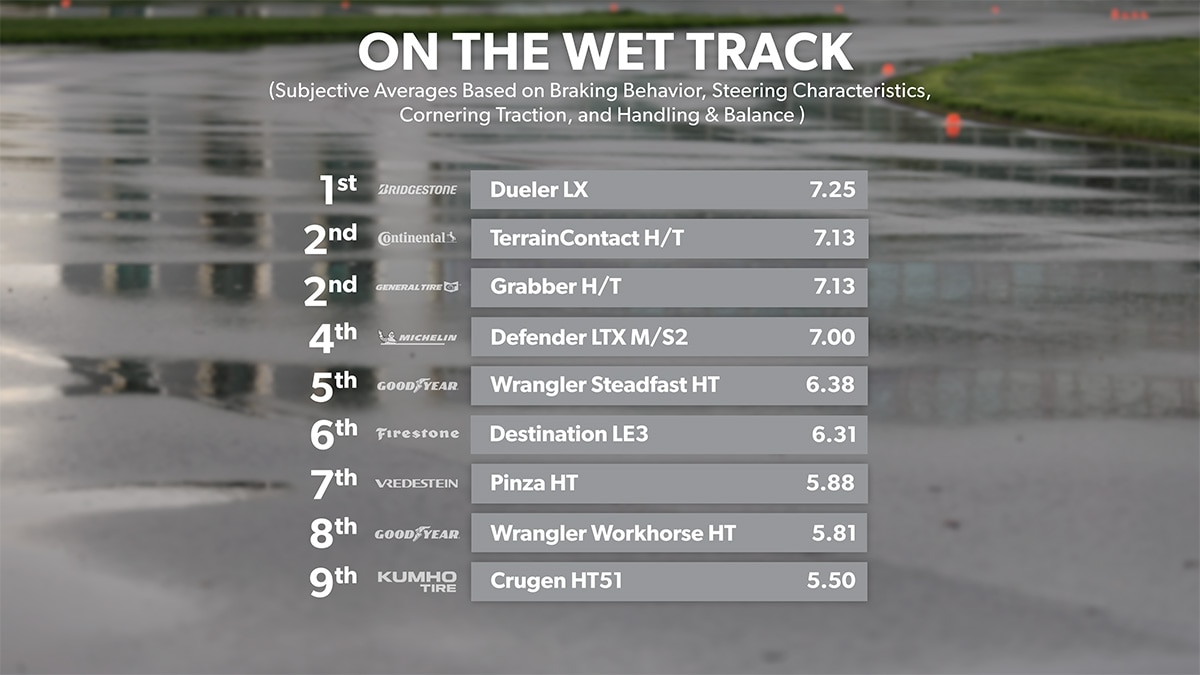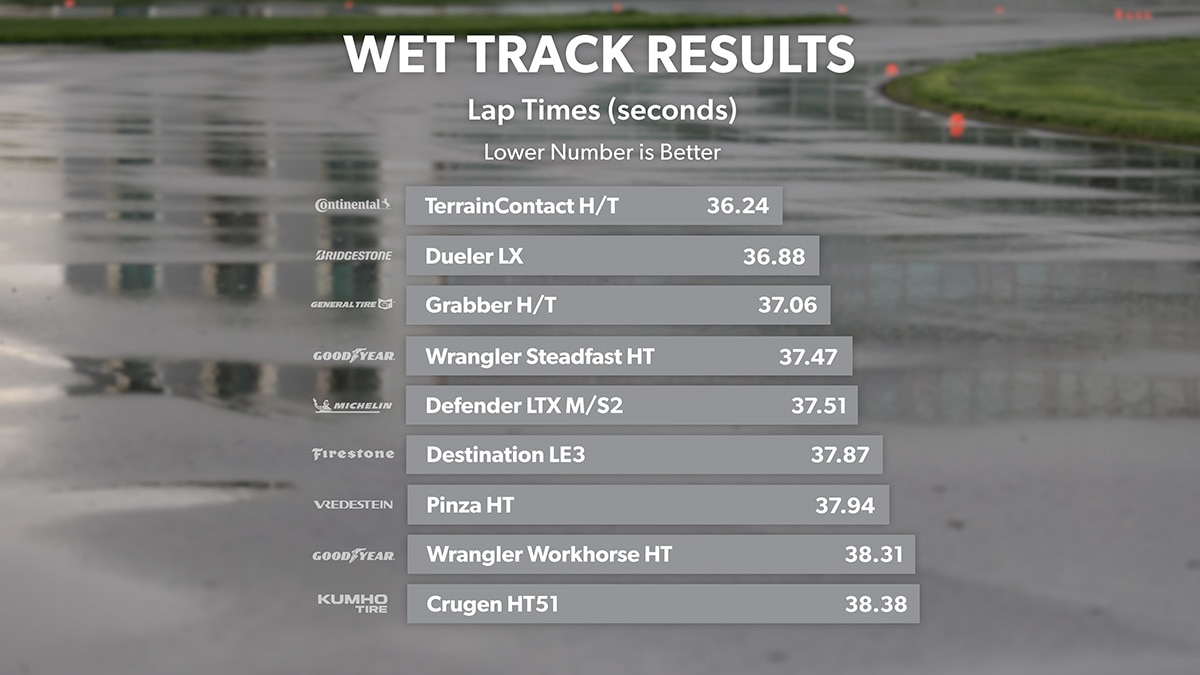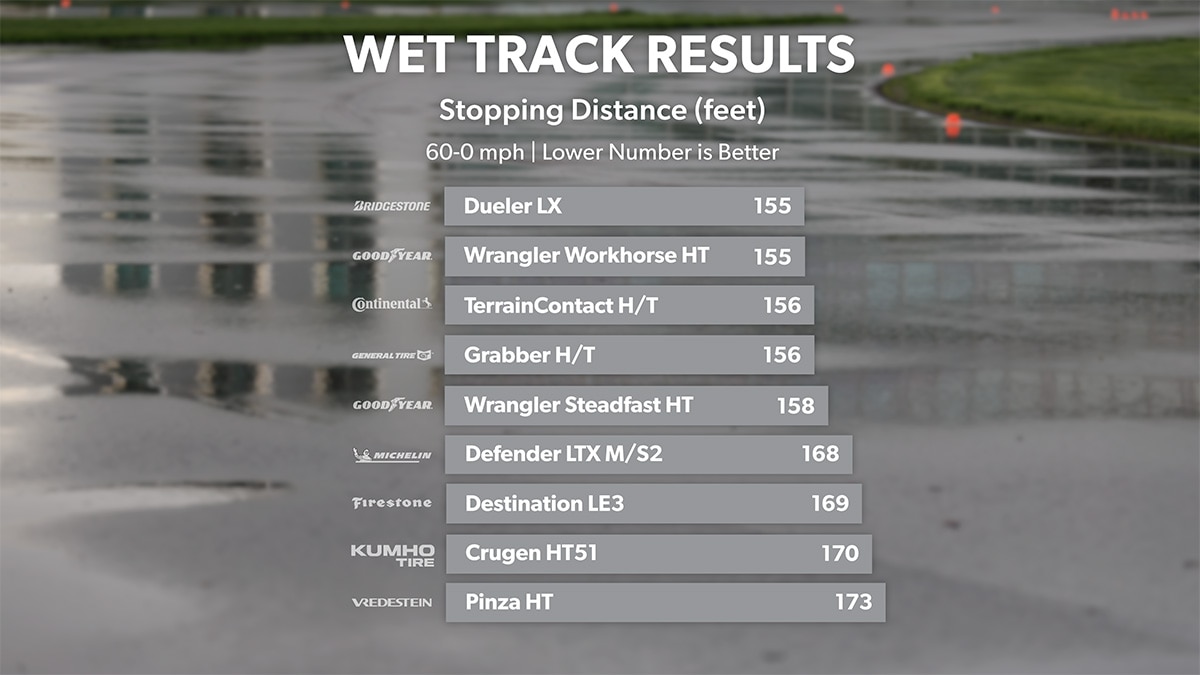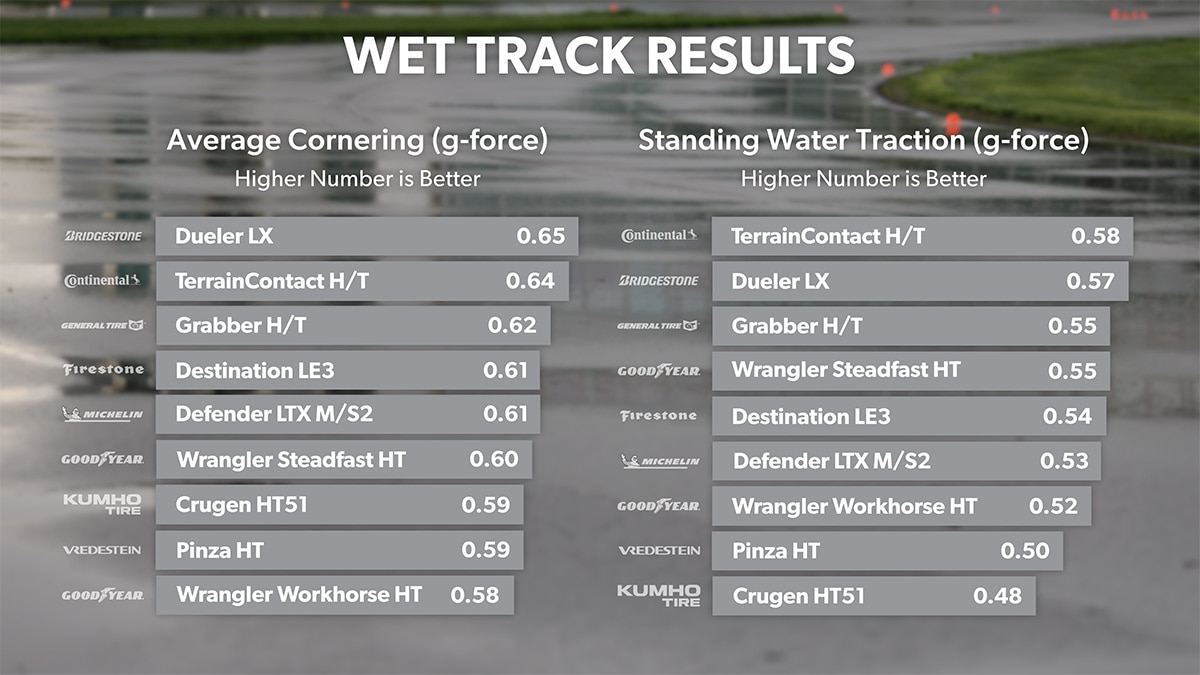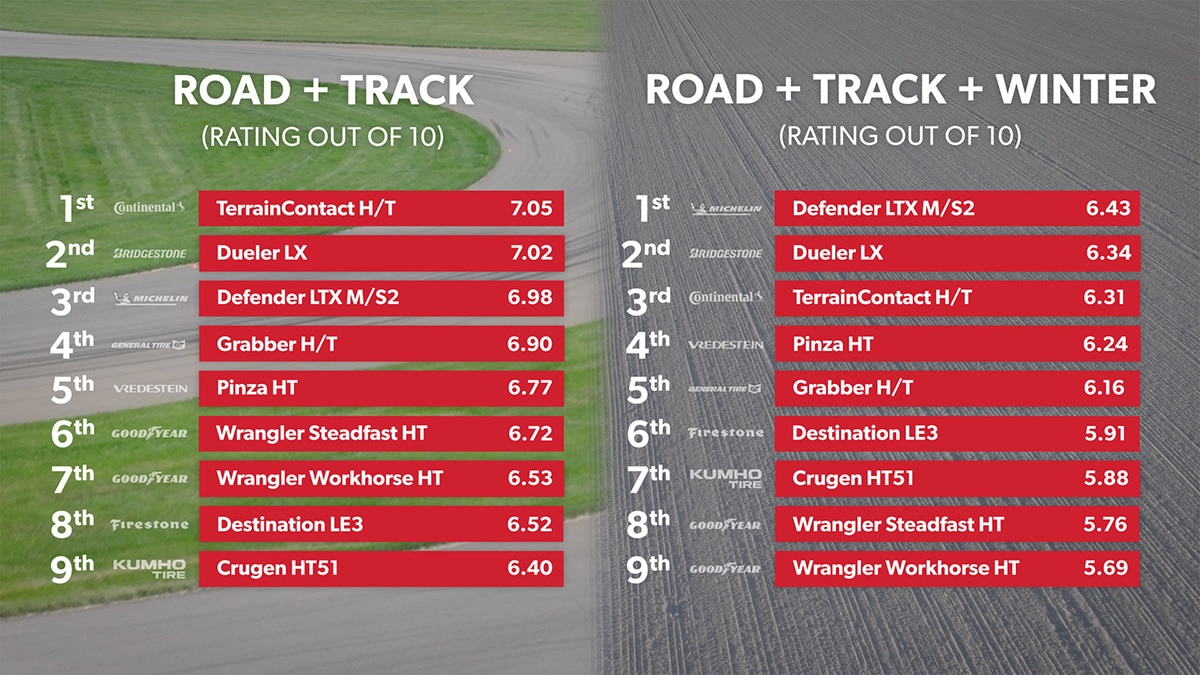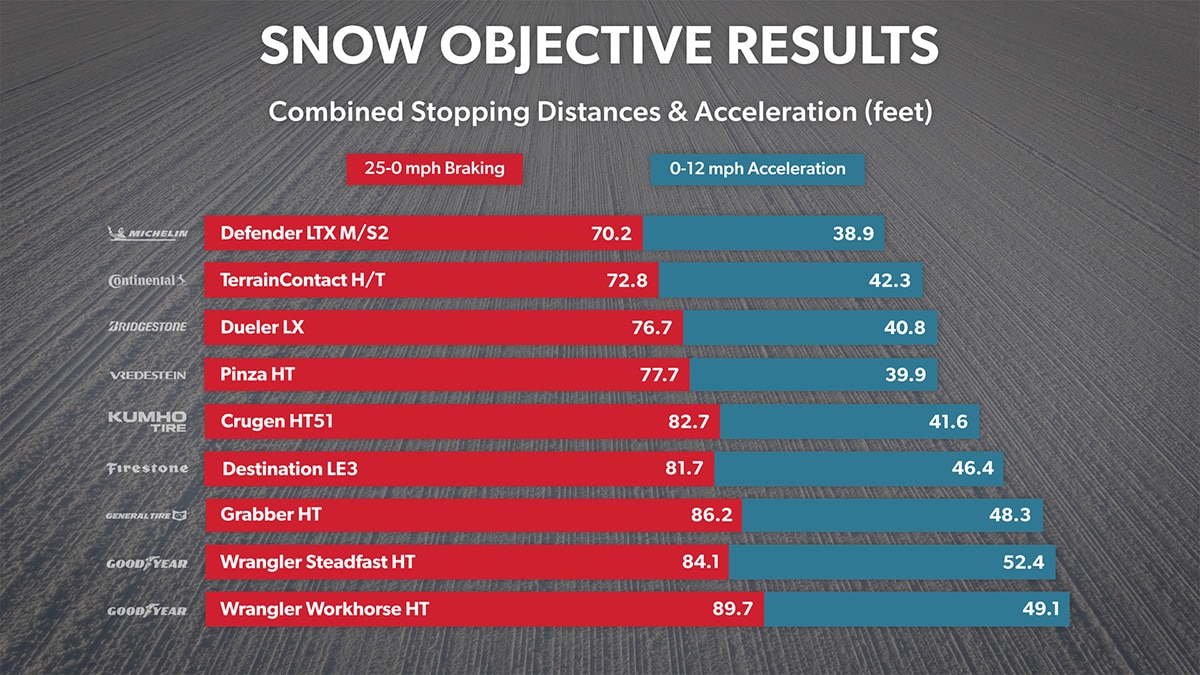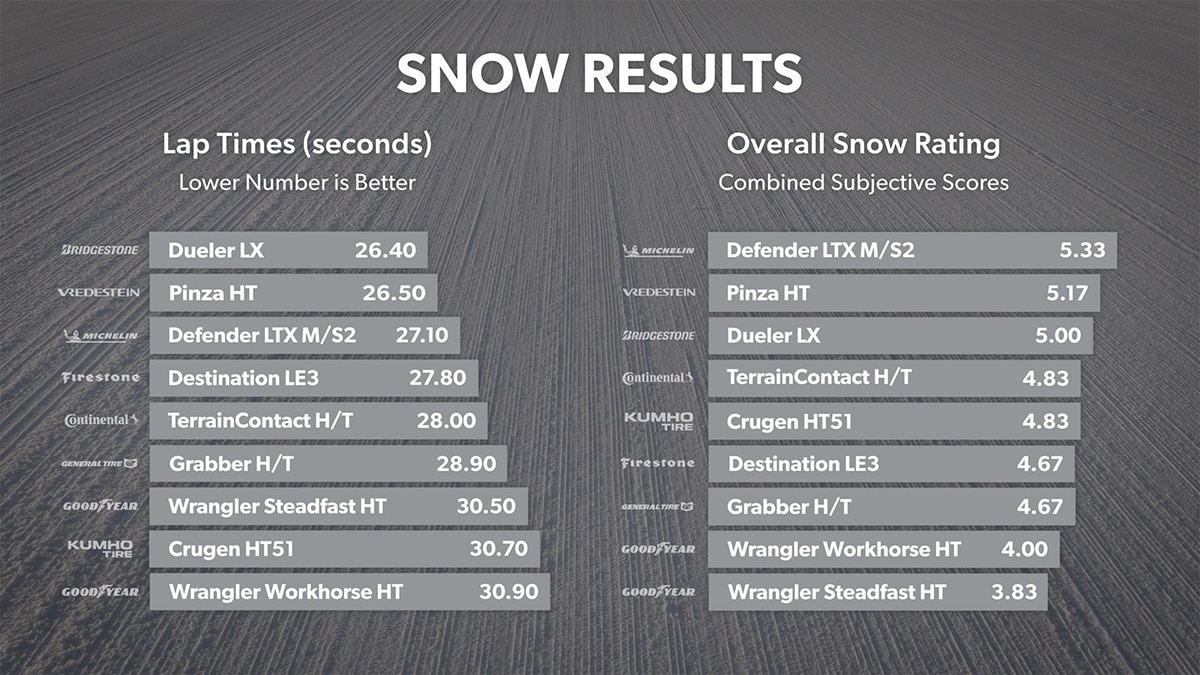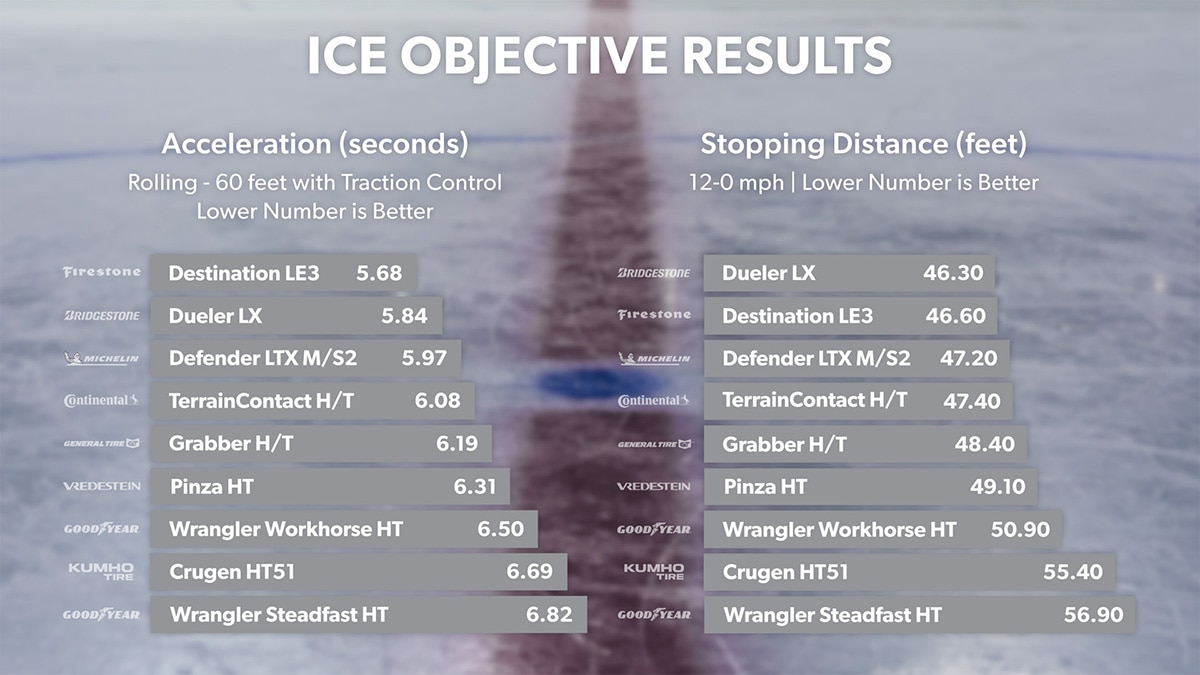Highway All-Season (HAS) tires are the practical, regular commuters that serve a wide variety of vehicles, with fitments for the most popular options—crossovers, pickups, vans, SUVs, and more. These are tires built for the road, for distance. These are the tires you wake up with every morning and drive on. Drivers depend on them for everyday travel through rain, sun, and snow. They're expected to maximize mileage and fuel economy while keeping drivers comfortable during their routine.
To test these workhorse tires, we finally have the perfect workhorse vehicle! Meet our brand new 2024 Tacoma TRD Sport, the fourth generation, redesigned and reengineered for this year and inspired by prior Toyota Baja racing trucks. Equipped with an 8-speed automatic transmission and a 2.4L turbocharged engine - and most importantly in "Solar Octane" Orange - this new version is designed for fun and function. We're excited to have a vehicle with the power, weight, and ride that represents one of the most common use cases for some of the most popular tire categories, including this Highway All-Season test.
Just because we have a shiny new truck doesn't mean we're shaking up the tried-and-true methodology you rely on. As with our other test reports this season: we'll introduce each tire, then break down our experiences on our real world road ride. After that, we'll discuss their traction and subjective behavior on both a wet and dry track to understand how these tires act when pushed to their limits. We'll also be testing braking and acceleration on snow and ice, as well as some light handling maneuvers, to give a full all-season, all-weather picture for each tire.
As with other tests of non-performance tires: we will reference our new "emergency lane change" maneuver. On a dry surface, from a target speed of 45 miles per hour, our drivers will pass through 3 sets of cones. Each point is designed to illustrate how the tires handle the kind of sudden, reactive swerves a person might actually make in an emergency situation. The 1st set indicates the point at which a person would react to the presence of an obstacle ahead, such as a stopped car or pedestrian, leaving the "lane." The 2nd set is the target placement to avoid the obstacle, indicating the lane change has succeeded, the obstacle was avoided, but the vehicle needs to return to the lane, so it acts as the trigger to suddenly recorrect and swerve back to the 3rd set of cones.
Bridgestone Dueler LX
We looked at the Dueler LX last year during a smaller Highway All-Season test and found it to be well in line with the competition, not one of the top performers, but well above the mid-pack - a solid option for drivers. In the intervening months, surveys and reviews have largely agreed. This time around, on the new Tacoma, our road ride was somewhat transparent when it came to picking up on smaller, repetitive imperfections but rounded over larger impacts with poise. Noise control was among some of the best in the test, muted over smooth roads and a consistent blended tone over most other surfaces. The steering feel was its main weakness - it took more input to get the same reaction and wasn't as eager or as pointy as other tires during a regular drive.
However, when things turned slippery on the wet track, it felt alive and reactive - directing the front end where and when it needed to be, exactly the kind of control a driver needs when the weather isn't cooperating. Straight-line acceleration felt good, not spinning in the water but translating power into forward momentum. It could take that momentum and flow smoothly around the track, rounding off turns and corners without feeling abrupt or harsh when the vehicle shifted its weight around, ultimately leading to a more intuitive, natural-feeling experience. Dry conditions were more of the same - it was responsive, eager to change direction on demand, and while it was a little down in lateral traction, it felt reflexive enough to keep it under control. The emergency lane change posed little issue for the Dueler LX, handling the aggressive maneuver smoothly.
In the snow, the Dueler LX displayed fairly decent acceleration for the group - not quite up to par with the best in test, but ahead of most. It was sensitive to throttle input however, engaging the vehicle's traction control frequently, and was not the most laterally stable during acceleration and braking tests. Steering was attentive and accurate, bordering on too quick, but still mostly neutral and easy to control even if its overall limits were lower and came on a little sooner than we'd have liked. The Dueler LX also boasted the strongest braking and nearly best acceleration on icy surfaces.
Continental TerrainContact H/T
With over 3.5M reported miles in customer surveys at the time of writing, the TerrainContact H/T is among the top options available in the category with drivers and past testing has found the same. Naturally, testing old favorites is just as important as the latest releases when we have a new platform to normalize data, and this road ride was very informative, if a bit indelicate. Larger impacts were harsher and firmer than several other tires tested, and smaller cracks were more apparent; there was just more movement over imperfections in general. Not uncomposed, but not subtle either. The road noise was a notch more prominent than some of the competition, with higher volume tread slap and a vague pitter-patter tone during the smoothest portions of the ride. Neither tone was universal, but enough to detract from the overall experience. The actual steering and handling were stand-out, though: direct, pointy, with excellent heft and response that gave out everything our drivers put in. It felt precise, almost sporty by comparison to much of the group.
Driving the TerrainContact H/T in the wet didn't feel quite as sporty, but it was still a pretty positive experience with plenty of traction to work with. It had some of the strongest braking from 60mph in the test, only a foot off from the leading tires, and it translated into powerful acceleration as well. Lateral grip was particularly strong; even threading the truck through slalom maneuvers felt secure and planted. It wasn't perfect, and one of our drivers did get the rear to step out on them occasionally, but within its limits, there was little to complain about. It was just as trustworthy during our testing in the dry, with strong traction and reliable attempts at the emergency lane change maneuver. It just felt good to drive.
In the snow, the TerrainContact H/T was sensitive to throttle and lacking in lateral stability, despite reasonable acceleration that felt on par with some of its betters. Steering response had a slight delay, and the rear was prone to stepping out, not due to strong front-end grip, but because the rear struggled for stability. It was difficult to maintain steady speed without losing traction on either front. Small throttle adjustments could upset balance, and it lacked a predictable plateau of control, making it more challenging to manage at the limit. Ice traction was good for the group, stopping at 47 feet, barely a foot away from the lead tire.
Firestone Destination LE3
Firestone's representative in the Highway All-Season category has been around for a while and is undoubtedly a known quantity in the category - with over 6 million miles of customer surveys. Customers have had a largely positive opinion of the tire, but it's been a few years since we tested it last, and, as with many of these tires, it's due for a revisit. Starting off with the road ride, one of the stand-out features of the tire was its ability to cushion impacts, rounding over and absorbing most road features, but at the cost of some refinement. It was plush but most distinctly uncomposed over bigger hits. It did a fine job controlling noise as well, with only a bit of the typical hum and resonance over crosscut concrete. Our main complaint was in the steering - it just took a lot more input to get a response than other options and generally felt loose and imprecise.
The situation didn't improve when our team switched over to testing it in the wet, either. It was a little too easy to lose grip and swing the rear end around, and any kind of recovery was slow: from understeer, during the back-and-forth of a slalom run, almost anywhere. Traction was down severely compared to other tires. Braking from 60 mph took 169 feet. While still not the worst in the test, it was close and a full 14 feet away from the leading tire. Dry conditions were naturally better, but it was unquestionably weak in grip. The steering was just as loose and squishy under stress, requiring too much input to get a functional response and pushing into hard-to-recover understeer. While it could pass the lane change maneuver if every input were perfect, it still only managed about half the time.
Driving the Destination LE3 in the snow was not a great deal more encouraging either. While it was far from the worst performing tire in a winter environment, it wasn't challenging the best either. Acceleration of any sort relied heavily on the vehicle's traction control, which was a near constant engagement during the drive. Steering was a non-linear affair, and the tires did little to offer confident direction from the front, creating a delayed effect that would ramp up and overpower the rear. Slowing down to recover would cause the rear to step out, slowing down to turn and applying slight throttle would cause the rear to step out. It may as well have had an Out of Office message flash on the dashboard every time input was required, because the rear was stepping out. Ice braking was, contrarily, the 2nd best tested and the strongest in acceleration on that particular surface.
General Grabber H/T
The successor to the General Grabber HTS 60, this is one of the newest tires up for examination today. It aims to improve tread life, wet braking, and rolling resistance over the previous generation while maintaining its positive aspects. Ultimately, how it compares to the rest of its family isn't nearly as important to drivers as how it compares to its competition, and that's what we're looking at. Our road ride revealed a firm ride, mostly in line with the other tires tested. It was cushioned enough to round out some of the bigger impacts but not enough to eliminate repetitive impacts or make the bumps unnoticeable. Noise control was a similar story, with generally lower-volume tones. There were a couple more noticeable sounds that stood above the typical blend of white noise and wind on crosscut concrete and extra smooth surfaces that detracted from an otherwise comfortable soundscape. The steering felt particularly nice and solid on-center. It deserved its kudos among the group, with appropriate feedback, heft, and precision.
The wet track experience was mostly positive, with the steering continuing to feel direct, though admittedly less responsive. The Grabber H/T had plenty of traction to work with and solid balance; it could put down power, everything was kept neat, and there were no drastic swings or drama. It was good and tidy. The wet braking was notably strong, only a foot off from the best in the test from 60mph. It was unexciting, but that's exactly what you want to see when conditions are slippery. Once the track dried off, it seemed like the lateral traction went with it, plowing into unrecoverable understeer once over those lower limits. The handling felt slow and unresponsive, and while braking from 60 mph was tied for the best in the test, grip limits still felt down overall. The emergency lane change was doable, but everything had to be perfect, and a good portion of the time, it just wasn't.
The cold weather did not offer much opportunity for the Grabber H/T to shine in the snow. Acceleration was more dependent on the vehicle's traction control than it was finding usable grip, and didn't feel particularly stable doing it. Steering felt dull, and slow, which was equally appropriate to its languid recovery times when its limits ran out. Those lateral limits were lower as well, requiring a slower speed to perform the same maneuvers possible with other tires. Ice braking was decent for the group, only losing a couple of feet from the lead tire.
Goodyear Wrangler Steadfast HT
The Wrangler Steadfast HT targets tread life as one of its main focuses, but our previous testing also found it to have above-average road manners. That was primarily true on the Tacoma - most of these tires were firm to some extent, transmitting road elements - but this particular tire was nicely composed, with little to draw attention to positively or negatively. Its ability to cull noise was particularly commendable, one of our favorites in the test. It was just low levels of blended white noise that faded away over the course of the drive. Steering feel was very responsive, direct, and even almost sporty, according to one tester. Just an all-around pleasant ride.
Once we shifted over to testing in the wet, the experience was a bit less encouraging - the difference in longitudinal traction could be felt almost immediately during attempts to accelerate. While braking felt fine enough, it was still objectively a few feet back from some of the other tires. Not a drastic step back but still noticeable. It wasn't just straight-line, the grip in corners was down too, but it was balanced enough and the steering responsive enough to make it work and kind of float around between inputs. Good, but not great. It was worse when pushed to its limits on a dry track - it felt like the steering, which was a highlight on the road and capable in the wet, was curiously lacking here. Steering inputs were delayed, and the understeer was inescapably brutal. It managed the emergency lane change maneuver only once for each driver.
Snow was not any more kind to the Wrangler Steadfast HT than prior conditions had been. It was eager to spin up, making acceleration a matter managed more by traction control than anything offered by the tire. In the S-turns, steering input would immediately snap the rear, and any attempt to adjust for faster inputs would just push into understeer instead. Driving slowly and gently applying any steering at all was the only way to keep it in line. Objectively, it had the weakest acceleration in the snow, very nearly the worst braking, and its ice metrics were equally at the bottom of the chart.
Goodyear Wrangler Workhorse HT
Aimed at long-lasting tread life in all seasons, the Wrangler Workhorse HT didn't make it into last year's testing season, but we're doing our best to make sure no tire is left behind and were eager to see how it performs amongst its Highway All-Season brethren. The ride had the firmness we expect from the category and the vehicle, but it rounded over bumps well enough, even if there was a bit more vertical undulation post-impact than we'd like. Any noise from the drive was generally well-managed, though just slightly higher volume than some of the best in the test. There were also some more noticeable tones, tread slap and vibrato that were notable, if not terribly annoying, depending on the surface. The steering was in a similar boat - responsive and direct, not bad, but not thrilling. Just good.
The same couldn't be said regarding testing on a wet track. The steering was just plain slow to respond, but the main problem was a lack of traction. You could feed it steering input and get the beginning of the response, but then it would slip - anything other than slowing down and ginger application of the throttle would spin the rear tires. It could be drifted around the skid pad, but the average driver isn't looking to drift out of the grocery parking lot either. The experience improved once the track dried off: the steering was more responsive, and while traction was still mid-pack at best, it could use it more effectively. Understeer was still an issue over the limit, but it managed the emergency lane change maneuver most of the time.
The Wrangler Workhorse HT struggled in the snow. Traction control was the star of the show during acceleration testing again, as it spun searching for grip. In S-turns, much like the other Goodyear, steering input would snap the rear, faster inputs pushed into understeer, but it held on a little longer than its cousin before giving up. It was a little easier to recover from unexpected slips as well. Trying to hold it at a consistent angle, as a driver would do on a snow-covered off-ramp, was difficult. Objectively, it had the weakest braking in the snow, nearly 20 feet away from the best tire in the test, and some of the weakest acceleration. Its ice braking was also near the bottom of the chart, though still 6 feet shorter than the worst in the test at just under 51 feet to come to a stop from 12mph.
Kumho Crugen HT51
Short for "Cruising Generation", this Highway All-Season entry from Kumho is one we've looked at before, and while it has fared decently with customers, that's the word: decent. Surveys and prior testing have borne that out - not the best, not the worst. Competition is always advancing, though, and in the new testing season, is decent still good enough? Starting off, our road ride was a mixed bag, even when it came to finding a consensus on the experience - our testers disagreed very slightly on just how firm it was, but like most of the tires in this test, it was stiff, and post-impact movement was a reality. The noise was on the louder end of the spectrum, not just in volume but in variety on all surfaces, with some general droning and ringing, as well as noticeable impact, sound over imperfections. Not all of it was high volume, but we could pick up something even over the smoothest roads. The steering was mostly unremarkable over the road, though its off-center response was a bit sedated and a tad imprecise.
The tires didn't fare much better on a wet surface either - the slow steering was much more noticeable when it was needed most, and lining up trajectory wasn't made any easier by its vague sense of direction. It wasn't helped any further by some of the weakest traction in the test. Braking from 60mph took 170 feet, nearly the furthest in the group, and it could be felt everywhere. Slowing down was mandatory. Anything other than very careful throttle application risked spinning the rear tires or leaning into oversteer. Once the track dried off, the Crugen HT51 was much more drivable. Traction was still a sore spot, but it felt more balanced, using what it had more effectively. It would still understeer, but the breakaway was progressive and provided enough feedback to recover it and adjust. It was able to complete the emergency lane change maneuver every time.
Winter driving was a similar story - average, but useable. Acceleration was neither a standout nor a weak point for the Crugen HT51. Steering was consistent and responsive, though not particularly sharp, it guided the front predictably, at least until the rear took over and initiated rotation. It couldn't be driven too fast for a simulated off-ramp: anything past 25mph and the steering had minimal impact. Still, it was generally easy to manage at the limit and maintain control smoothly just past it. The Crugen HT51 was not as comforting on ice, with the 2nd longest braking distances in the test at a significant 55 feet to come to a stop from 12mph.
Michelin Defender LTX M/S2
The Defender LTX M/S2 is the latest in the venerable and popular LTX Highway All-Season tire line. We looked at it previously late last year (on our previous Ford Explorers) in comparison to its predecessor. We found it to be a nice iterative improvement, advancing its traction and handling without giving up what made it popular in the first place. Now it's time to revisit the Defender LTX M/S2 on our new Tacoma and see how it measures up in a broader group. During our road ride, it was fairly transparent - small cracks were muted but still noticeable - bumps also had some extra jiggle. Overall, it never rose to the level of discomfort, but it didn't disguise what was happening either. The noise was well-managed, blended into a consistent, nondescript background. The steering and handling were mostly even, unexciting, and a bit slow to respond, just off-center, but relatively quick past that point.
The experience of steering it on a wet track was sluggish by comparison, owing in part to the truck itself, but it didn't feel as reactive as we'd like. It felt like the tire had good, useable traction, capable of turning any grip into power when needed and, given enough foresight, pulling it up to a halt when needed. Lateral traction was also respectable, keeping the Tacoma's rear from stepping out even during the 180-segment of the track. For the dry attempt at emergency lane changes, it was slow to respond and only effective about half the time, tending towards understeer. 45mph seemed to be its limit, considering both the vehicle and the tires.
With snow on the ground, the Defender LTX M/S2 was dominant among this group. Acceleration felt light, with a momentary spin before traction control and grip found purchase, though it was still the strongest in the test, reaching the target speed by a full second over even the closest tire. Braking was similarly strong, with only a single tire coming within 2 feet of it, besting the majority of the tires by stopping 6-10 feet shorter. Steering was also quite nice, with prompt direction and linear response, it just felt solid. It was neutral and planted in the front during turns, at least until throttle was applied, at which point the rear wanted to step out. Ice braking was competitive, at 47 feet to come to a stop from 12mph, it was only a foot further than the lead tire.
Vredestein Pinza HT
The Pinza HT is Vredestein's Highway All-Season tire, and much like the category itself, it isn't flashy or ostentatious. It's a workhorse with its head down, mounted up, and ready to work. So, we put it to work. The quality of the road ride was almost immediately remarkable compared to most of the tires our team had driven - not drastically so, but it did the best job cushioning the cabin from the potholes and imperfections of the road of any tire in this group without losing composure or giving excess post-hit movement. The overall volume was nicely handled as well, nothing drastically improved over the average, but on the whole, most individually noticeable tones were kept to a minimum, if not entirely muted. The steering was among the best, not singularly, but certainly in good company. It was direct and responsive off-center, with appropriate heft and a solid return-to-center that just felt at home on the road.
Unfortunately, the Pinza HT didn't feel quite as in its element on the wet track. It was simply down on grip, with the longest braking distances from 60mph at 173 ft. It was buoyed somewhat by the otherwise excellent steering. Its lateral traction was also stronger than its straight-line grip, which kept it from pushing out the rear quite as much as some of the other low-traction options, but neither aspect would keep it from spinning tires if our drivers weren't ginger with the throttle. With a dry track, the Pinza HT was decent - it communicated well enough, and the traction breakaway at the limit was progressive enough to make the most of its limited traction. The emergency lane change maneuver presented a sufficient challenge; it only managed completion about half the time and was close either way.
During winter testing, acceleration was sensitive to initial throttle input—too much caused excessive spin, requiring either full traction control intervention or a reset. However, once underway, it felt strong. Steering was linear and responsive, with the front and rear axles working together smoothly. Around the circle, traction was balanced, with all four wheels breaking away simultaneously. It was easy to initiate and control rotation while maintaining it at the limit. Ice braking was reasonable, at 49 feet from 12mph, the Pinza HT was comfortably ahead of the weaker tires tested, but toward the back of the rest.
Summary Conclusion
After all the brake dust had settled, one of the notable takeaways from this test was ultimately how close many of these tires actually were from an overall perspective. Some were louder or quieter, better or worse in the wet, or had a little more precise steering, and most tires were pretty firm - but the separation between some of the best and worst tires was ultimately slight. That isn't to say there weren't significant differences between them, because there certainly were in the winter portion of the test, but in many cases the effect was subtle.
Michelin's Defender LTX M/S2 strikes a compelling balance between all of its characteristics - it's nice for regular commuting, and it handles the stress of hard, emergency driving in all seasons with aplomb. In particular, it was a real star compared to its rivals here in the winter. Outside of that, it wasn't the best at any one thing, but it also wasn't particularly weak at any one thing either. We often talk about touring tires as a kind of "jack of all trades" and the Defender LTX M/S2 exemplifies that well. The Bridgestone Dueler LX and Continental TerrainContact H/T also emerged as favorites in this test, with well-balanced performance in both wet and dry conditions, as well as reasonable, if not exceptional, on-road drives.
Among the lower-traction tires in the test, the Vredestein Pinza HT was one of the better options, even if that comes across as a bit of a backhanded compliment, the narrow band between best-and-worst here is worth reiterating. It was subjectively one of the most composed tires on the road and the steering feel was among the greats, so the recognition is deserved. Its well-balanced handling and controllable winter behavior do their best to make up for a simple lack of grip the rest of the year though. General's Grabber H/T is similar to the Michelin in many respects, and even features a little nicer wet handling and road manners - if it weren't for its somewhat baffling lack of traction on the dry track and middling winter performance, it might be one of the top tires in the test.
The Firestone Destination LE3 and Kumho Crugen HT51 both fall into the less comfortable end of the spectrum when it comes to the daily grind of driving, which is what most people will be using them for. The Destination LE3 had a serviceable ride and above-average noise control, but for hard driving, it was still squishy, vague, and not particularly exceptional either. Combined with its underwhelming winter performance and lackadaisical steering, it's not a favorite. The Crugen HT51 was a bit of an odd one. It was our least favorite tire on the road, and in the wet, and wasn't fantastic in the cold, but was surprisingly nice when it was pushed around the dry track. That single, specific application is hardly enough to make up for its shortcomings, but it's a silver lining on an otherwise unremarkable cloud.
Finally, Goodyear's Wrangler Steadfast HT: it rides great, there's no doubt that it would be a go-to pick for road trips or long work commutes, and wasn't bad in the wet to boot. However, its understeer-biased dry performance was such a step down from all the other options in the test that it needs attention, as it failed most attempts to complete the emergency lane change maneuver. Coupled with some truly remarkable winter driving for all the wrong reasons, it's left in an unenviable position. The Wrangler Workhorse HT, also from Goodyear, was more balanced between wet and dry, and was nice enough on the road, but it matched its siblings poor winter behavior, and it didn't shine anywhere else either. Almost everything it did capably was done better by other tires.

